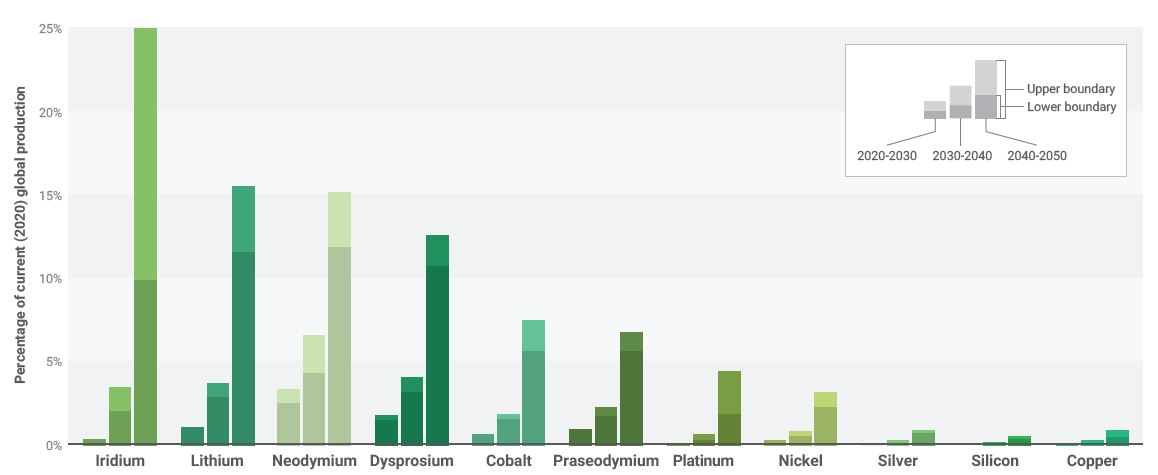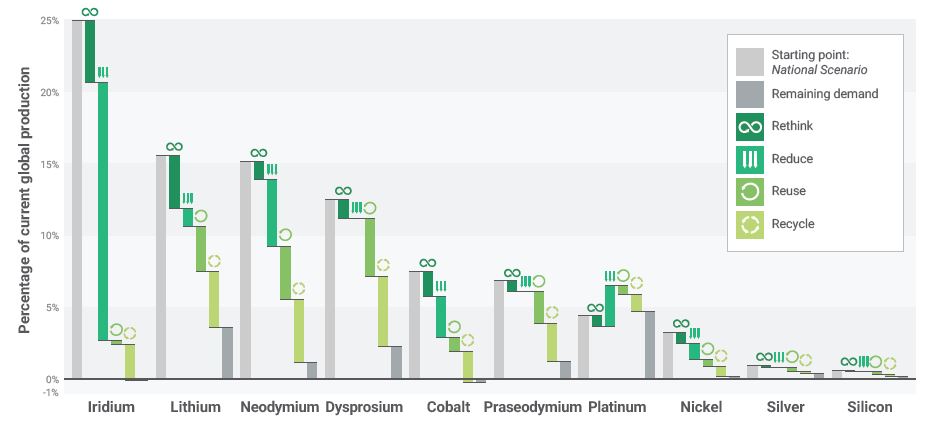The limited availability of critical metals poses a growing risk to the transition to a clean energy system. As a consequence of the fast-growing demand, we expect shortages of critical metals both in Netherlands and across the globe. The risks around the availability of these materials are not taken into account in today’s policies around renewable energy and the circular economy. In our report Towards a circular energy transition, we map the critical metal demand for the Dutch energy transition and examine circular strategies to lower this demand.
This report is commissioned by Invest-NL, the Dutch government investment agency, the Provinces of South-Holland and Flevoland, grid operators Alliander, Stedin and Enexis (through Enpuls) and the Dutch authority for public works. The research is done in collaboration with Metabolic, Polaris Sustainability and Quintel.
Increasing risks for the energy transition
Climate-neutral energy scenarios that model for greater self-sufficiency are projecting a higher risk of a shortage for critical metals. This is the consequence of both the larger capacity of system batteries as the larger number of solar farms and wind turbines. A focus on energy savings, interconnectivity and innovation will help to lower our critical metal demand. The graph below shows the metal demand of the ten most critical metals, as a percentage of present (2020) global production.

Circular strategies
In our report, we outline four circular strategies which can help reduce a future shortage of critical metals. These are:
- Rethink (redesigning the energy system from a material perspective)
- Reduce (substitution of critical metals)
- Reuse, repair & refurbish (extending the lifetime of products)
- Recycle (recovering materials at the end of life).
These strategies focus both on lowering the demand as on increasing the supply for critical metals. A combination of all four strategies is required, as focusing on one strategy has insufficient effect. This is shown in the figure below.

